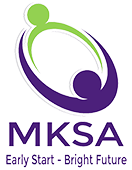A process where children at age 3 move from the EI program to the Preschool Special Education Program or other early childhood supports or services. The process can start 180 days before a child’s third birthday.
Archives: Terms to Know
Family training (EI)
Teaches parents and caregivers strategies for helping their child achieve success in daily activities.
Special Education Itinerant Teacher (SEIT)
SEIT services are defined as “services provided by certified special education teachers of an approved preschool program on an itinerant basis to a preschool student with a disability, at a site determined by the CPSE to provide specialized individual or group instruction directly to the student, or to provide consultation to the child’s teacher to adjust the learning environment and/or modify instructional methods to meet the Individual needs of a student with a disability who attends an early childhood program.”
Special Education
Specially designed individualized or group instruction or special services or programs, and special transportation, provided at no cost to the parent, to meet the unique needs of students with disabilities.
Social History
A report of information gathered and prepared by qualified school district personnel pertaining to the interpersonal, familial and environmental variables which influence a student’s general adaptation to school.
SEPTA (Special Education Parent Teacher Association)
A PTA organization for parents of children with disabilities found in many school districts whose mission is to promote an understanding of special education and enrich the lives of children with special needs.
Sensory integration
A form of occupational therapy that focuses on strengthening the child’s ability to receive information from the body’s senses: visual (sight), auditory (hearing), touch (tactile), vestibular (balance), and proprioceptive (where the body and its parts are in space).
Section 504
A civil rights statute designed to eliminate discrimination on the basis of disability in any program or activity receiving federal financial assistance. Some individuals who do not qualify for service under IDEA may receive supportive service and/or classroom modifications under Section 504.
Related Services
Developmental, corrective and other supportive services required to assist a student with a disability. Such services may include speech and language services, occupational therapy, physical therapy, family training, social work services, among others. The IEP describes the type of service approved, frequency, duration and location of each service. These may be individual or provided in a group with a maximum of 5 students per group.
Receptive Language
Language that is spoken or written by others and received by the individual.
